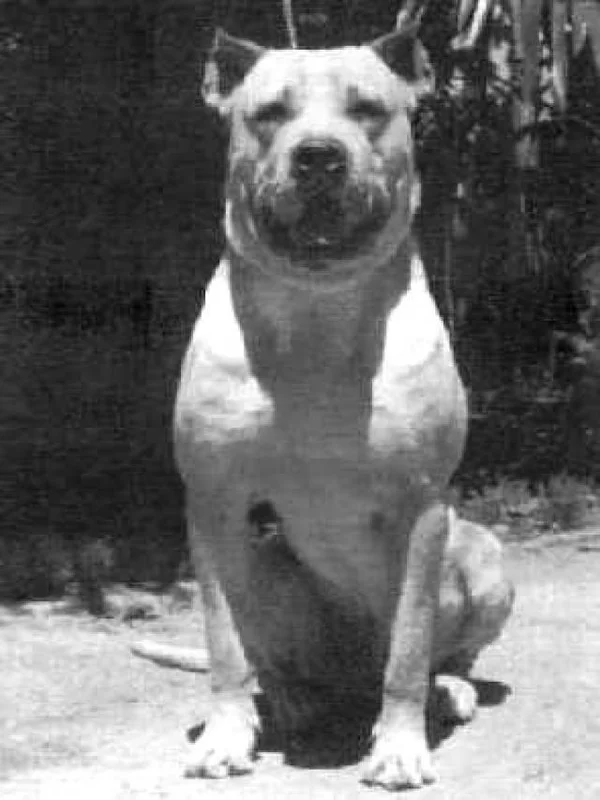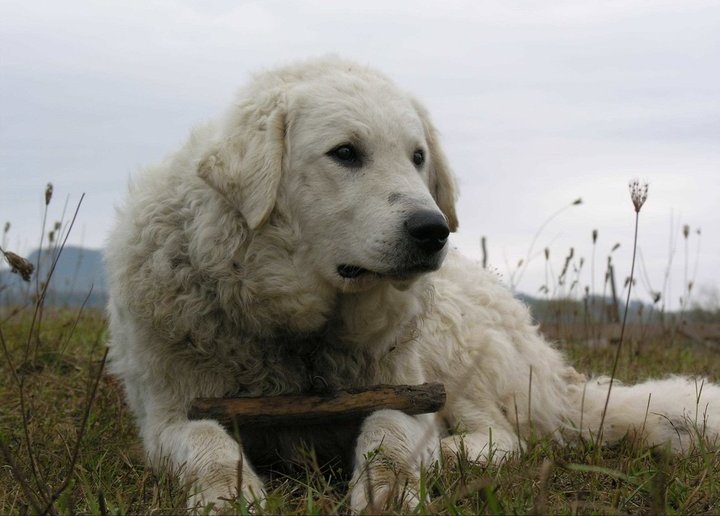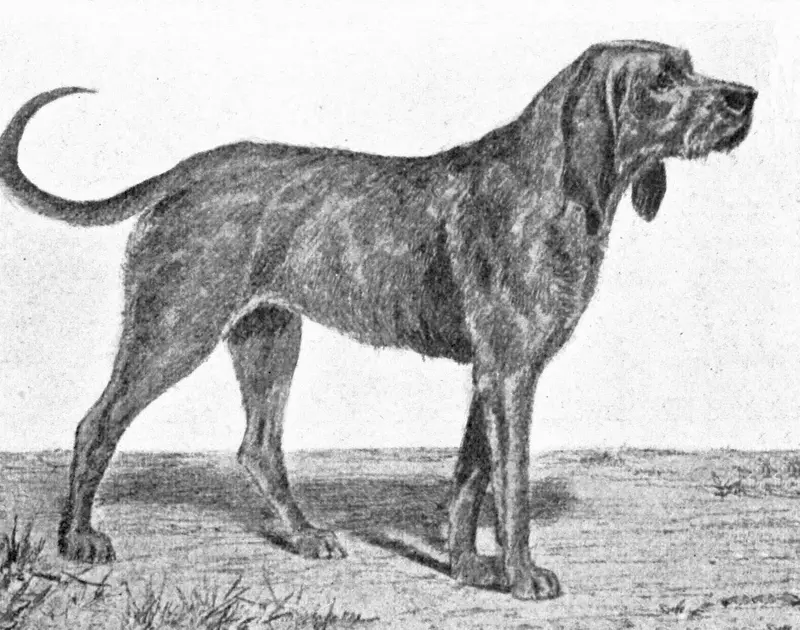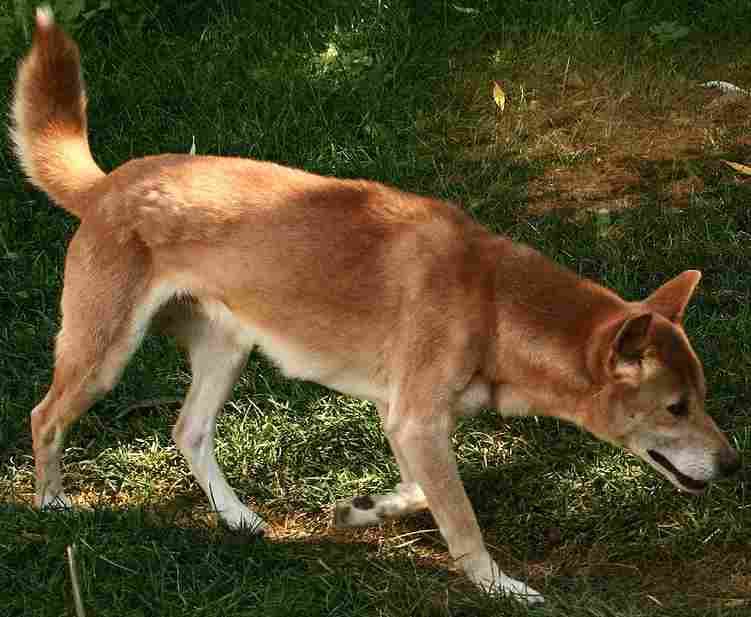East Siberian Laika
The East Siberian Laika is a medium-large hunting dog known for its resilience and versatility. With a striking appearance and strong instincts, they excel in hunting and sledding while being loyal companions.
Overview
🐕Breed Overview
✨Key Traits
💡What Makes East Siberian Laika Special
One of the standout traits of the East Siberian Laika is its remarkable hunting ability. Bred for endurance and strength, these dogs excel in tracking and capturing game in harsh conditions.
Their protective instincts make them excellent watchdogs, and they are known to be highly alert to their surroundings. Despite their strong prey drive, they are generally good with children and can be affectionate family members.
Their adaptability to cold climates and ability to work in teams as sled dogs further highlight their versatility as a breed. Owners should be prepared to provide ample exercise and mental stimulation to keep them happy and healthy.
The East Siberian Laika, known as Vostotchno-Sibirskaia Laika, is a remarkable breed that embodies the spirit of the Siberian wilderness. With a history steeped in hunting and survival, this medium-large spitz-type dog has been a loyal companion to nomadic tribes for centuries. Males typically stand between 22 to 26 inches tall, while females are slightly smaller, ranging from 20 to 24 inches.
Their striking appearance features a medium-long double coat, erect triangular ears, and a tail that curls over their back. The breed showcases a variety of colors, including black and tan, grizzle, and red, making each dog unique. The East Siberian Laika is not just a pretty face; it is a highly skilled hunting dog, adept at tracking and capturing game ranging from small animals like squirrels to large predators such as bears.
Their natural instincts make them excellent sled dogs, capable of enduring harsh climates and heavy workloads. Despite their strong hunting drive, they are calm and well-tempered with their families, making them good companions and watchdogs. Training an East Siberian Laika requires consistency and positive reinforcement, as they can be stubborn and independent.
Socialization is crucial to ensure they interact well with other dogs and people. While they are not suited for urban living, these dogs thrive in environments where they can exercise and explore freely. With an average lifespan of 10 to 12 years, the East Siberian Laika is a resilient breed that requires ample exercise and mental stimulation to stay happy and healthy.
They are best suited for experienced dog owners who can provide the structure and activity this breed needs. If you're looking for a loyal, hardworking companion that can keep up with your adventurous lifestyle, the East Siberian Laika may be the perfect fit for you.
🎉Fun Facts
East Siberian Laikas are known for their calm demeanor around families but can be aggressive towards large predators.
The East Siberian Laika is known for its exceptional hunting skills, capable of tracking both small and large game.
They are not recognized by the AKC, but they are celebrated in Russia for their hunting prowess.
They have a strong prey drive, making them excellent at hunting and tracking.
This breed is highly adaptable to cold climates, thanks to its thick double coat.
Breed Characteristics
Family & Friends
Good Behavior
Get Up & Go
Household Harmony
Temperament & Personality
✨Key Traits
🐕Core Temperament
The East Siberian Laika is known for its loyal and protective temperament. They are generally calm and well-mannered with their families, displaying affection and companionship.
However, they can be wary of strangers and may exhibit territorial behavior, making them good watchdogs. Their independent nature can sometimes lead to stubbornness, so consistent training and socialization from an early age are essential.
They are energetic and require regular exercise, making them best suited for active families or individuals who can provide the necessary physical and mental stimulation.
💫Personality Profile
The East Siberian Laika is a breed characterized by its loyalty and intelligence. They are known to form strong bonds with their families, displaying affection and protectiveness.
While they are calm and well-tempered with people, they can be wary of strangers and may exhibit territorial behavior. Their independent nature can sometimes make training a challenge, but with consistent and positive reinforcement, they can learn obedience and commands.
They thrive in active environments where they can engage in physical activities, and their energetic disposition makes them great companions for outdoor adventures.
🔊Vocal Tendencies
The East Siberian Laika has a moderate noise level. They may bark to alert their owners of intruders or unusual sounds, but they are not excessive barkers.
Their vocalizations can vary depending on the situation; for instance, they may bark excitedly during play or when they sense a potential threat. While they are generally calm, their protective nature may lead them to be vocal when they perceive a need to defend their territory.
Affection & Social Traits
Energy & Activity
Communication Style
Care Requirements
🏃♂️Exercise Requirements
Daily Exercise
The East Siberian Laika is a highly active breed that requires a significant amount of exercise to maintain its physical and mental well-being. Ideally, an adult East Siberian Laika should engage in at least 90 to 120 minutes of vigorous exercise daily.
This can include activities such as long walks, running, hiking, and engaging in hunting or tracking exercises, which align with their natural instincts. Puppies may require shorter, more frequent play sessions to avoid overexertion, while senior dogs may benefit from moderate exercise to maintain their health without straining their joints.
Regular exercise is crucial for preventing behavioral issues such as boredom and anxiety, which can lead to destructive behaviors. Insufficient exercise can result in weight gain, increased energy levels leading to hyperactivity, and a decline in overall happiness and health.
Preferred Activities
🏠Living & Adaptability
Space Requirements
The East Siberian Laika thrives in environments that provide ample space for exercise and exploration. Ideally, they should have access to a large yard or open area where they can run and play freely.
While they can adapt to living in a home with a yard, they are not well-suited for apartment living due to their high energy levels and need for space. Owners in urban settings should ensure they can provide sufficient daily exercise through walks and trips to parks.
Lack of adequate space can lead to frustration and behavioral issues, so it's essential to create an environment that allows for their natural instincts to be expressed.
Climate Preference
🍲Feeding Guide
Schedule
Food Types
Portion Size
Special Nutritional Needs
The East Siberian Laika requires a balanced diet rich in protein and healthy fats to support its active lifestyle. Owners should avoid feeding low-quality commercial dog food that may contain fillers.
It's important to monitor their weight and adjust food portions accordingly, especially during periods of less activity. Additionally, some dogs may have sensitivities to certain ingredients, so a grain-free or limited-ingredient diet may be beneficial for those with allergies.
✨Grooming Requirements
Grooming Overview
The East Siberian Laika has a medium-long double coat that requires regular grooming to keep it healthy and free of mats. Owners should brush their Laika at least once a week to remove loose hair and prevent tangles, with more frequent brushing during shedding seasons.
Bathing should be done as needed, typically every few months, to maintain coat cleanliness without stripping natural oils. Regular nail trimming, ear cleaning, and dental care are also essential parts of their grooming routine to ensure overall health.
Care Schedule
Brush weekly; bathe every 2-3 months; trim nails every 2-4 weeks.
Health Profile
⚕️Health Care
Regular health care is vital for the East Siberian Laika's longevity. Routine veterinary check-ups, vaccinations, and preventive treatments can help catch health issues early and maintain overall well-being.
Owners should also be proactive in managing their dog's diet, exercise, and weight to prevent obesity and related health problems. Regular dental care is also important to prevent dental disease, which can impact overall health.
Health Issues Overview
⏳Average Lifespan
Genetic Factors
Genetics play a significant role in the East Siberian Laika's lifespan. As a breed, they are generally robust, but certain hereditary conditions can affect their longevity.
Responsible breeding practices that prioritize genetic health can help reduce the incidence of common health issues. Potential owners should seek reputable breeders who conduct health screenings and prioritize genetic diversity to ensure the best chance of a healthy dog.
Living Conditions
The East Siberian Laika's lifespan can be influenced by various environmental factors. Dogs that live in active households with ample outdoor space and opportunities for exercise tend to live longer, healthier lives.
Exposure to harsh weather conditions can also impact their health, so providing shelter and protection from extreme temperatures is essential. Additionally, social interactions with other dogs and humans can contribute positively to their mental well-being, which is crucial for longevity.
🏥Common Health Issues
Hip Dysplasia
Warning Signs
🔬Diagnosis
Veterinarians typically diagnose hip dysplasia through physical examinations and X-rays.
💊Treatment
Treatment options include weight management, physical therapy, and in severe cases, surgery.
📝Management Tips
Maintain a healthy weight, provide joint supplements, and engage in low-impact exercises to support joint health.
Progressive Retinal Atrophy (PRA)
Warning Signs
🔬Diagnosis
Diagnosis is made through veterinary eye examinations and genetic testing.
💊Treatment
Currently, there is no cure; management focuses on adapting the environment to the dog's needs.
📝Management Tips
Regular veterinary check-ups and monitoring for signs of vision loss are essential.
Hypothyroidism
Warning Signs
🔬Diagnosis
Blood tests are used to measure hormone levels and diagnose hypothyroidism.
💊Treatment
Lifelong medication is typically required to regulate hormone levels.
📝Management Tips
Regular monitoring and medication can help manage this condition effectively.
🛡️Preventive Care
🔬Hip Evaluation
This test assesses the dog's hip joints for any signs of dysplasia, which can lead to arthritis and pain.
📅 Recommended annually for adults; more frequently for dogs with a family history of hip dysplasia.
🔬Thyroid Function Test
This test evaluates the dog's thyroid function to detect hypothyroidism, which can affect energy levels and weight.
📅 Recommended annually for adults, especially those showing symptoms of lethargy or weight gain.
🔬Ophthalmic Examination
This test screens for common eye diseases, including PRA, which can lead to vision loss.
📅 Recommended every 1-2 years, or more frequently if the dog shows signs of vision problems.
Training
🧠Intelligence & Trainability
💪Work Drive
The East Siberian Laika has a strong work drive, stemming from its history as a hunting and sledding dog. They thrive when given tasks to complete, whether it's hunting, participating in dog sports, or engaging in obedience training.
Providing mental stimulation through puzzle toys or scent work can help keep them engaged and satisfied. Without sufficient mental and physical challenges, they may become bored and exhibit destructive behaviors.
⚠️Training Considerations
The East Siberian Laika can present some behavioral challenges, particularly due to its strong prey drive and independent nature. They may exhibit stubbornness during training, making consistent and firm guidance essential.
Socialization from a young age is crucial to help them learn to interact appropriately with other dogs and people. They may also be territorial, which can lead to aggressive behavior towards unfamiliar dogs or intruders if not properly managed.
Owners should be prepared to invest time in training and socialization to mitigate these challenges effectively.
📝Training Tips
Training an East Siberian Laika requires patience and consistency. Positive reinforcement methods work best, as these dogs respond well to rewards and praise.
Start with basic obedience commands and gradually introduce more complex tasks, ensuring that training sessions are engaging and varied to hold their interest. Incorporating activities that align with their natural instincts, such as tracking or agility, can enhance their training experience.
Regular socialization with other dogs and people is also vital to help them develop good manners and reduce territorial tendencies.
History & Heritage
📜Origin Story
The East Siberian Laika's origins can be traced back to nomadic tribes that migrated into Eastern Siberia, bringing their dogs with them. These dogs were bred for their ability to withstand extreme cold and perform various tasks, including hunting and sledding.
The breed's development was influenced by the harsh conditions of the Siberian landscape, which required dogs that were not only strong and resilient but also intelligent and trainable. The East Siberian Laika's lineage includes influences from both western and eastern breeds, contributing to its unique characteristics and versatility as a hunting dog.
⏳Development History
The East Siberian Laika was officially recognized as a distinct breed at the All-Union Cynological Congress in 1947. Its development involved the systematic breeding of dogs from various regions, including the Lake Baikal area and the Evenki National Territory.
G. Abramov, emphasizing the Laika's hunting abilities and physical characteristics.
Over the years, breeding programs have aimed to preserve the breed's natural instincts and adaptability to the Siberian environment, resulting in a diverse range of types within the breed.
🛡️Purpose & Historical Role
Traditionally, the East Siberian Laika was bred for hunting a wide variety of game, from small animals like squirrels and grouse to larger predators such as bears and mountain lions. Their keen sense of smell and strong tracking abilities made them excellent hunting companions.
Additionally, they were utilized as sled dogs, showcasing their strength and endurance in harsh climates. Today, they continue to serve in these roles while also being valued as loyal companions and watchdogs.
🏺Cultural Significance
The East Siberian Laika holds a significant place in Russian culture, particularly among indigenous peoples of Siberia. Historically, these dogs were essential for survival in harsh climates, serving as hunting companions and sled dogs.
Their ability to track and hunt various game has made them invaluable to local communities, and they are often celebrated in folklore and traditional stories. The breed's resilience and adaptability to the Siberian wilderness have made them symbols of strength and endurance in Russian culture.
Conservation Status
This breed is less common but has stable populations in certain regions.









